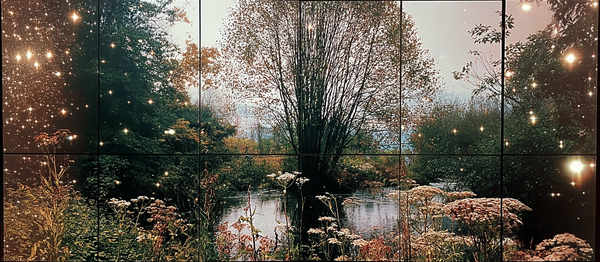The End of Complex UIs: How MCP Servers Are Eliminating Software Learning Curves

Have you seen those viral videos of people creating stunning 3D scenes in Blender by just describing what they want? No clicking through complex menus, no hunting for the right tool in a sea of options, no watching 10-hour YouTube tutorials. Just conversation.
This isn't just a neat demo—it's the beginning of the end for complicated user interfaces. The Blender MCP server that's going viral right now is just the first hint of a much larger transformation in how we interact with software.
The Problem with Complex UIs

Until now, we've accepted a simple trade-off: powerful software requires complex interfaces. Want to create professional 3D models? Get ready to memorize hundreds of Blender shortcuts. Need to analyze data? Prepare to learn Tableau's intricate visualization system. Want to design a website without coding? Ironically, you'll need to master equally complex no-code platforms like Bubble or Webflow.
The learning curve for these tools isn't just steep—it's a barrier to entry that gatekeeps professional capabilities behind weeks or months of frustrating training. And even after you've "learned" the software, how much time do you spend hunting through nested menus or Googling "how to do X in Y software" every time you need to perform a task you haven't done recently?
The barrier to learning a complex UI is enormous compared to the simplicity of chatting with an agent that can interact with that platform on your behalf. This is the fundamental shift that's beginning to take place.
But what if there was another way?
Enter MCP Servers: The Universal Translators for Software
Model Context Protocol (MCP) hints at a shift in how we interact with software. In its simplest form, MCP servers (used with an AI assistant) act as a bridge between human intent and complex software interfaces. You speak in natural language about what you want to accomplish, and the server translates that into the specific actions needed in the software.
It's like having an expert looking over your shoulder, handling all the technical details while you focus on the creative or analytical goal.
Here's what makes this truly revolutionary:
- No more learning curves - Instead of spending weeks mastering an interface, you can be productive from day one
- Context-aware assistance - MCP servers understand the software's capabilities and constraints
- Natural language interaction - Describe what you want in your own words, not the software's terminology
- Cross-platform functionality - The same conversational interface works across different tools
Beyond Blender: Where MCP Servers Can Disrupt (or enhance?) Existing Software
The viral Blender demos have captured people's attention, but this transformation extends far beyond 3D modeling. Here are just a few examples of complex software that could be revolutionized by MCP servers (if they haven't been already):
Data Visualization & Dashboards
Tools like Grafana, Tableau, and Power BI are incredibly powerful but notoriously difficult to master. Imagine the potential of MCP servers in this space where you could simply say:
"Create a dashboard showing our user growth trends by region over the last quarter, with an alert when any region drops more than 5% week-over-week."
An MCP server could translate this into the exact sequence of actions needed in the visualization software—no more hunting through dropdown menus or remembering the exact syntax for alert conditions. The viral Blender examples are showing us what's possible.
Audio & Video Production
Logic Pro X, Final Cut Pro, and DaVinci Resolve are industry-standard tools with notoriously steep learning curves. Imagine future MCP servers that could transform how we interact with these tools:
"Create a beat with a trap rhythm section, add a low-pass filter to the hi-hats, and increase the reverb on the snare."
The days of searching through countless effect plugins and parameters could soon be over. What we're seeing with Blender is just the beginning.
Database Management
Ever tried to write complex queries in PostgreSQL or create efficient schemas in MongoDB? Future MCP servers could translate intentions into optimized commands:
"Find all users who signed up in the last month but haven't completed their profile, and show me their geographic distribution."
The "No-Code" Irony
Perhaps most ironically, "no-code" platforms like Bubble, Webflow, and Zapier have themselves become complex interfaces that require significant learning investments. These tools were supposed to democratize software creation, but ended up creating their own barriers to entry.
The reality is that no-code is literally harder to use than AI code agents. With the approach pioneered by MCP servers, you could simply describe the app or automation you want to create, and the AI would handle the implementation details in these platforms. The promise of no-code is finally being fulfilled—not by eliminating code, but by eliminating the need to learn complex interfaces altogether.
How Cline is Leading This Revolution
At the forefront of this transition is Cline, an AI assistant that excels at both creating and utilizing MCP servers. What sets Cline apart is its:
- MCP Server Marketplace - A growing ecosystem of ready-to-use bridges to popular software
- Custom Server Creation - Unparalleled ability to help users build new MCP servers for their specific tools
- Multi-Tool Orchestration - Seamlessly working across different software through their respective MCP servers
- Human-in-the-Loop Workflow - Letting you approve actions before they're executed, maintaining control while eliminating complexity
Cline isn't just participating in this revolution—it's actively shaping it by making MCP servers more accessible and easier to create than ever before.
The result is a new paradigm where expertise shifts from "knowing how to use the software" to "knowing what you want to accomplish." It's the difference between memorizing keyboard shortcuts and focusing on your creative vision.
What This Means for the Future of Software
This shift has profound implications:
For Users
You no longer need to invest weeks in learning new software. The tools you've been intimidated by are suddenly accessible. Your skills become transferable across platforms because you're interacting through natural language, not proprietary interfaces.
For Developers
If you've created software with a complex UI, building an MCP server could dramatically expand your user base. Rather than simplifying your UI (and potentially sacrificing functionality), you can maintain the power while making it accessible through conversation.
For Organizations
The training burden for specialized software plummets. New team members can be productive immediately. The skills gap narrows as experts can focus on domain knowledge rather than software operation.
Beyond Bridges: The Next Evolution
It's worth considering that MCP servers might be just the beginning of this transformation. As companies observe the popularity and effectiveness of these conversational bridges to their platforms, they may eventually integrate similar capabilities natively.
What starts as external MCP servers could evolve into built-in conversational interfaces for platforms like Tableau, Adobe Creative Suite, and even no-code tools. MCP servers are proving the concept and demonstrating user demand for a fundamentally different way of interacting with software.
Whether MCP servers remain as bridges or become the catalysts for a broader interface revolution, one thing is clear: the days of mandatory complex UIs are numbered.
The New Accessibility
This isn't just about convenience—it's about accessibility in the deepest sense. Tools that were previously restricted to those willing and able to climb steep learning curves are now available to anyone who can express what they want to create.
The senior executive who needs a quick data visualization without calling the analytics team.
The independent filmmaker who can't afford to spend months mastering editing software.
The small business owner who wants to create a custom app without learning Bubble's complex interface.
MCP servers are democratizing access to powerful tools by eliminating the UI tax we've all been paying.
Start Building Bridges
If you're excited about this revolution, here's how to get involved:
- Try Cline and explore the growing marketplace of MCP servers
- Build your own MCP servers for internal tools or open-source them for the community – Check out Cline's documentation to get started
The era of complicated UIs doesn't have to continue. We no longer need to accept that powerful software requires complex interfaces. With MCP servers, we can bridge the gap between human intent and software capability, making the tools we use every day more accessible, more productive, and more focused on what truly matters: creating, analyzing, and building amazing things.
The future of software interaction isn't about better UIs—it's about no UIs at all.
This blog was written by Nick Baumann, Product Marketing at Cline. Follow us @cline for more insights into the future of development.




